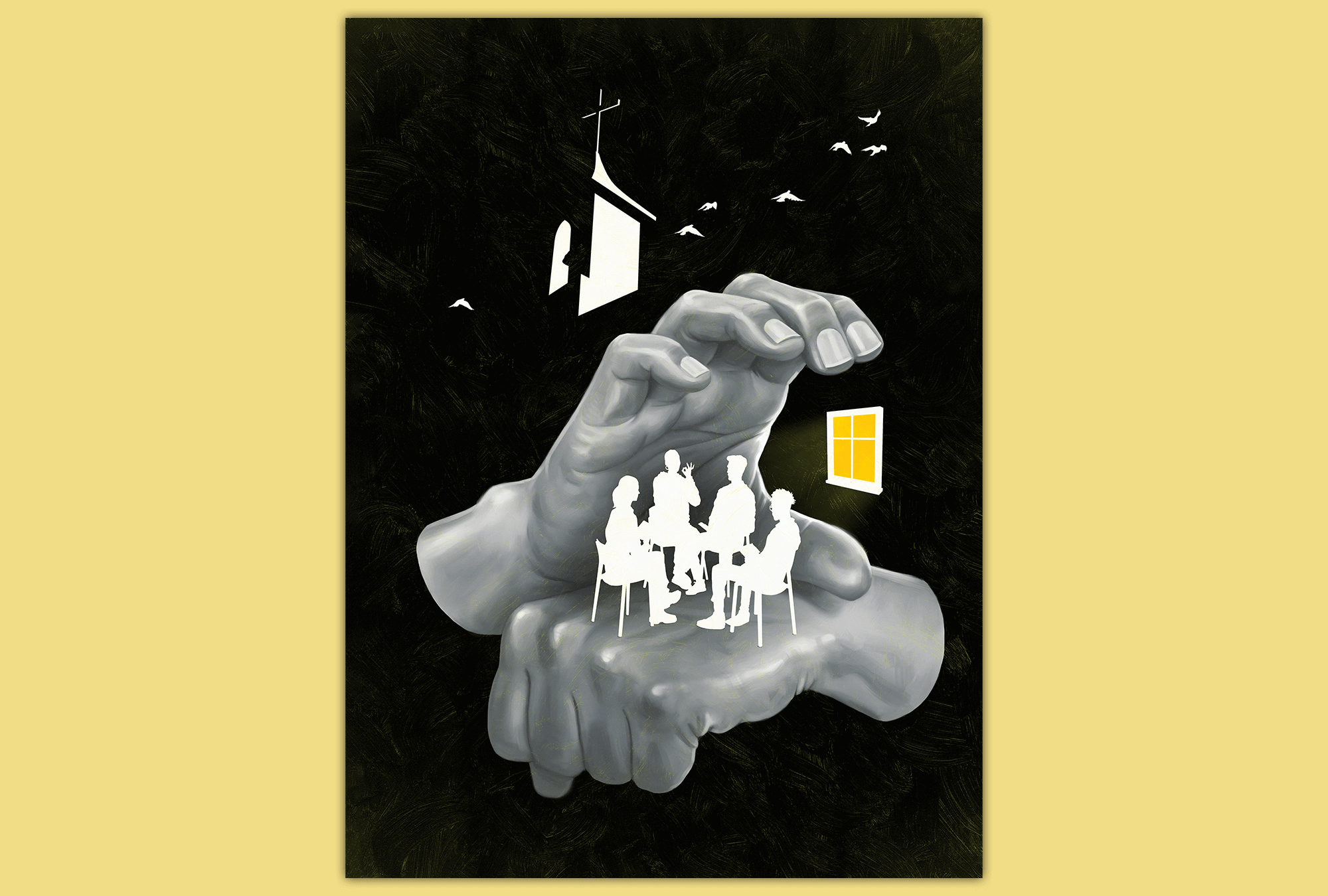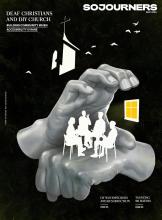Share As A Gift
Share a paywall-free link to this article.
This feature is only available for subscribers.
Start your subscription for as low as $4.95. Already a subscriber?

Illustration by Robert Carter
FOR A FEW months last winter, I did something that still feels too rare in my Christian life: I attended a local Bible study group in American Sign Language.
Every month or so, a half-dozen of us gathered in someone’s apartment, caught up over dinner, and then hashed out theology together. We often stayed late into the night.
Unlike other Bible studies, no one spoke. Half of the people there were deaf, the other half were hearing — but everyone knew how to sign. This Bible study in Boston was highly informal. It wasn’t attached to any particular ministry — especially since none of the deaf people there, including me, attended a local church regularly. Sitting together, far removed from any institutional church, we planted the seeds of community.
Each time I drove home, I felt vital glimmers of encouragement. I’d lived in Boston for more than three years and still hadn’t found a church of my own. I only attended Sunday services sporadically. None of this was by choice. Though my faith is important to me, most churches are not accessible to deaf worshippers.
During my time in Boston, I wound up “church-hopping,” attending one service here, another there, depending on when ASL interpreting was available. Denominational preference is a luxury deaf churchgoers don’t have: Over the years, I’ve visited everything from evangelical and nondenominational to Presbyterian, Anglican, Episcopal, and Catholic churches. My years in Boston felt similarly fragmented, even though I learned a lot about how different Christian traditions approach worship.
Even when I found Sunday services to attend, deeper church participation felt impossible for me. Church events are rarely ASL-interpreted, and I’d given up on trying to show up at speaking-and-hearing Bible studies, potlucks, and weekend retreats. (I occasionally went to local church gatherings when my signing hearing friend Tim Loh could “friendterpret.”) I’d grown up in the church, watching my hearing parents attend weeknight church events, then later watching many hearing Christian friends share about their “church families” in adulthood. But I couldn’t figure out how to grasp such a life for myself.

Got something to say about what you're reading? We value your feedback!